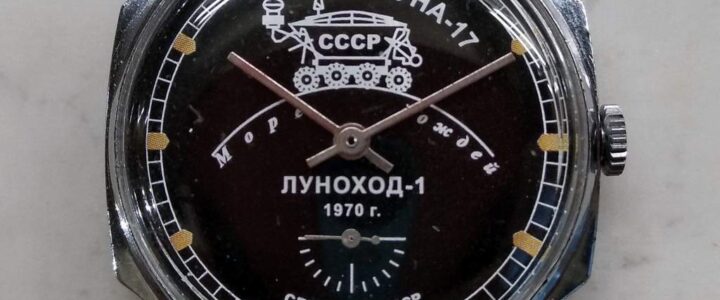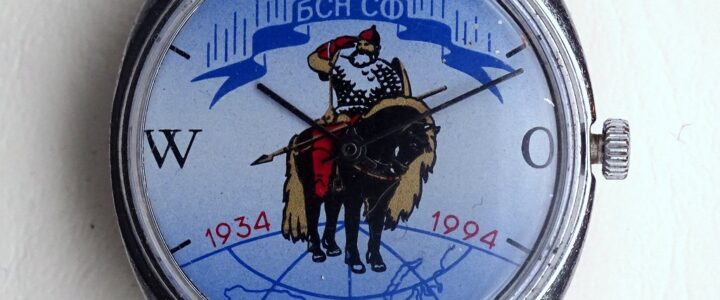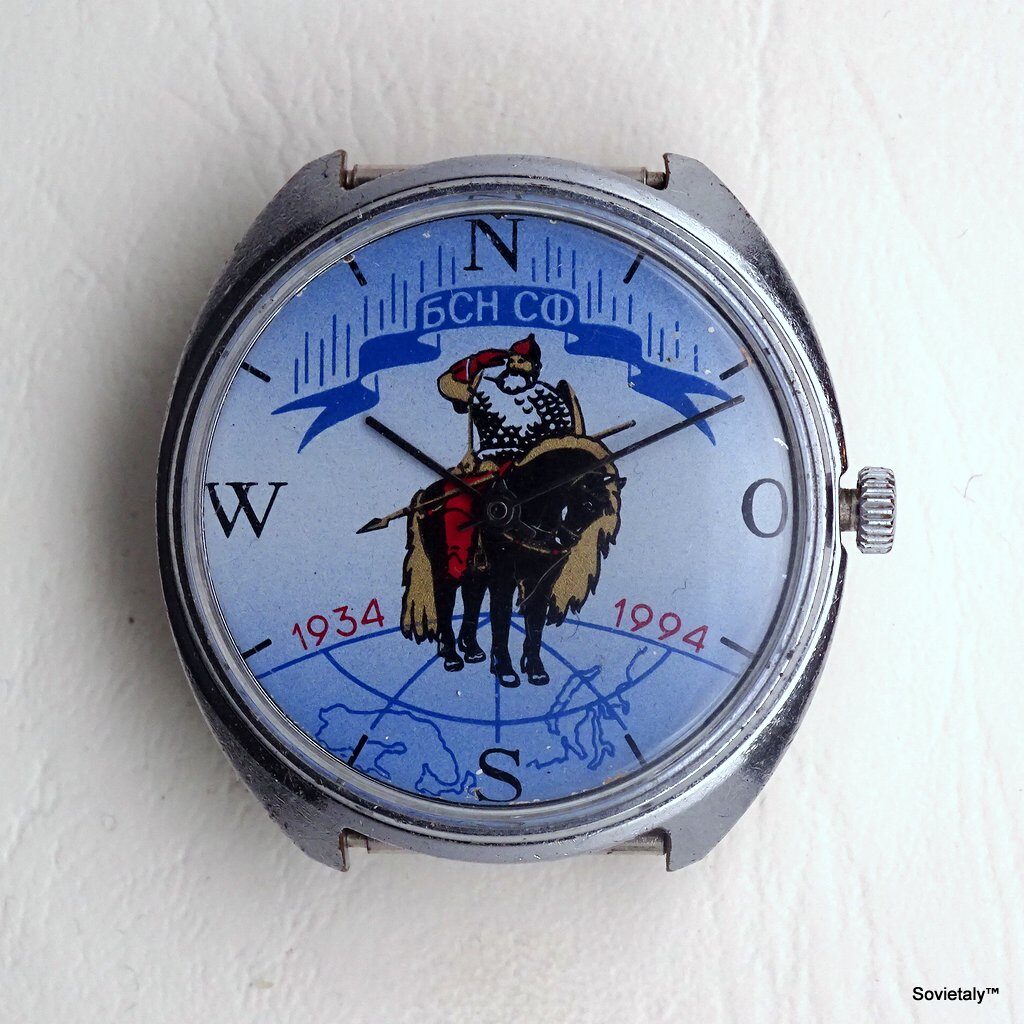Soviet commemorative watches are highly sought after by collectors, but there are often fakes sold at high prices. This article aims to help collectors verify the authenticity of a Pobeda Lunochod 1 watch with a black dial, using detailed analysis methods such as microscopy.
Technical Details of the Pobeda Lunochod 1 Watch
The Pobeda Lunochod 1 watch, equipped with a Pobeda 2602 mechanical movement, is known for its reliability and simplicity. The case, usually made of chrome-plated brass, houses silver-colored hands for hours, minutes, and seconds. The black dial, celebrating the 1970 Lunochod 1 mission, is decorated with the image of the Soviet rover and other Cyrillic inscriptions.
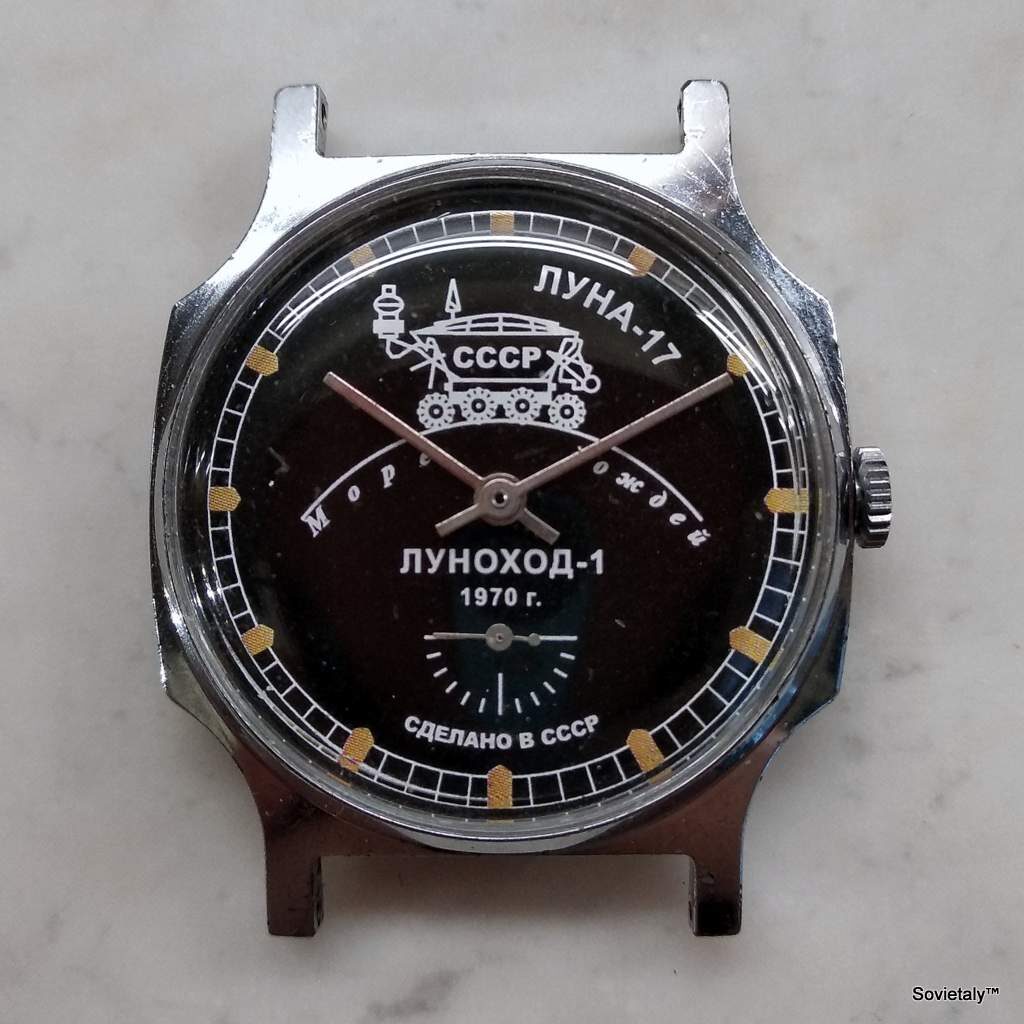
Dial Authenticity: Real or Fake?
Many collectors wonder if the commemorative dial of the Pobeda Lunochod 1 is authentic or a fake. To answer this question, it is necessary to analyze the dial with appropriate tools, such as a microscope.
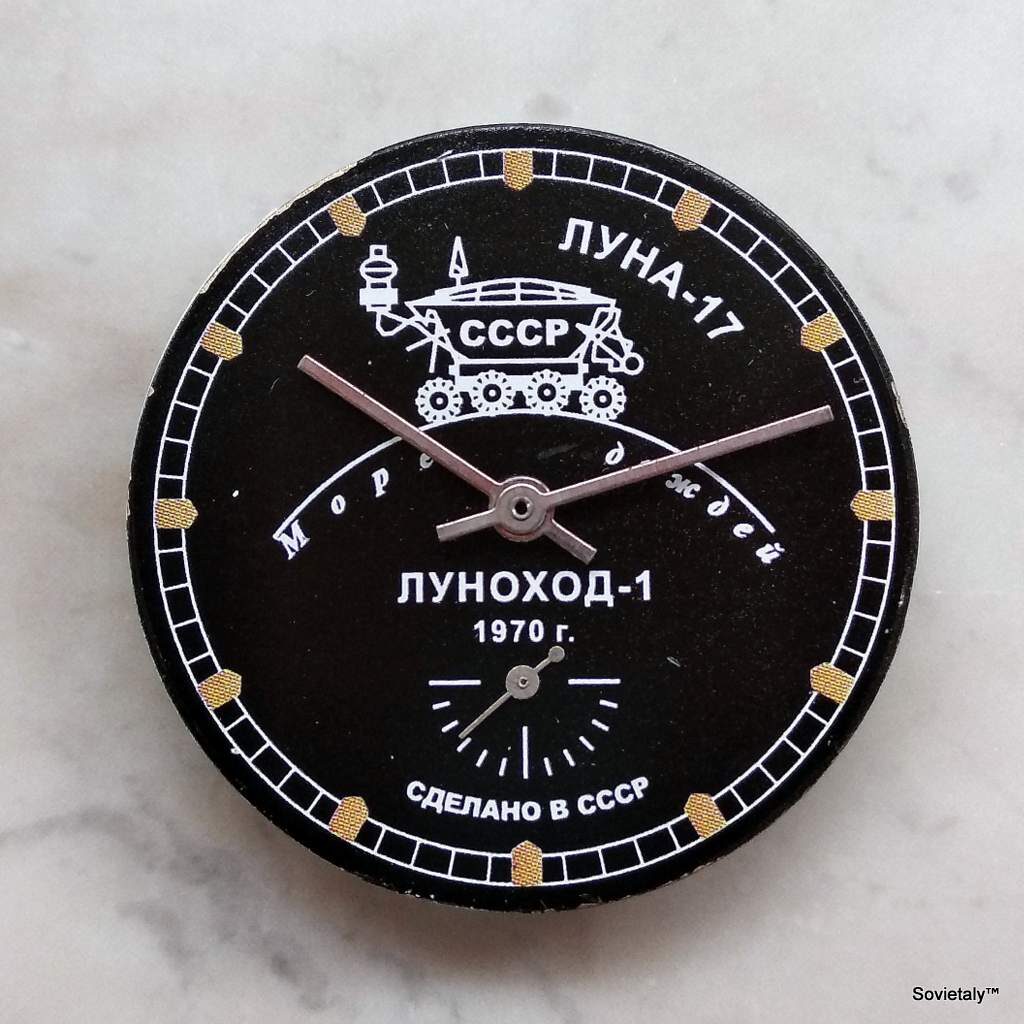
Microscopic Analysis
Microscopic images of the black dial reveal important details that help determine authenticity:
- Modern Printing: The images clearly show that the dial was printed using modern techniques. The writings are not concentric and exhibit ink print quality, with a color mixture visible especially on the indices.
- Lack of Documentation: In Soviet catalogs of the time, there is no trace of wristwatches dedicated to the Lunochod rovers. This strongly suggests that these dials were produced later to deceive collectors.
Suspicious Details
In addition to the print quality, there are other clues suggesting the dial is not authentic:
- Perfect Condition: Too many examples for sale are in almost perfect condition, an unusual characteristic for watches produced in the 1970s.
- Layout and Colors: The dial design, with misaligned writings and colors not typical of authentic Soviet models, is another clue of falsity.
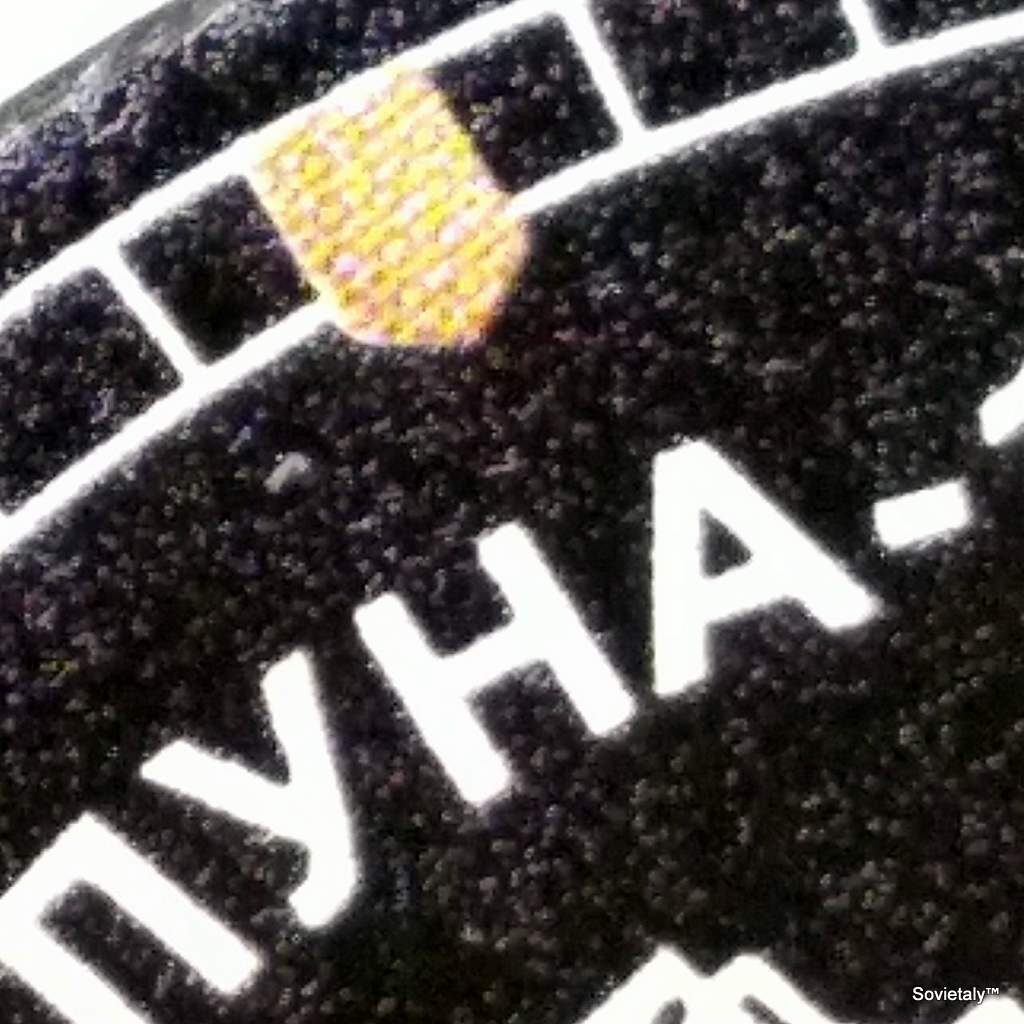
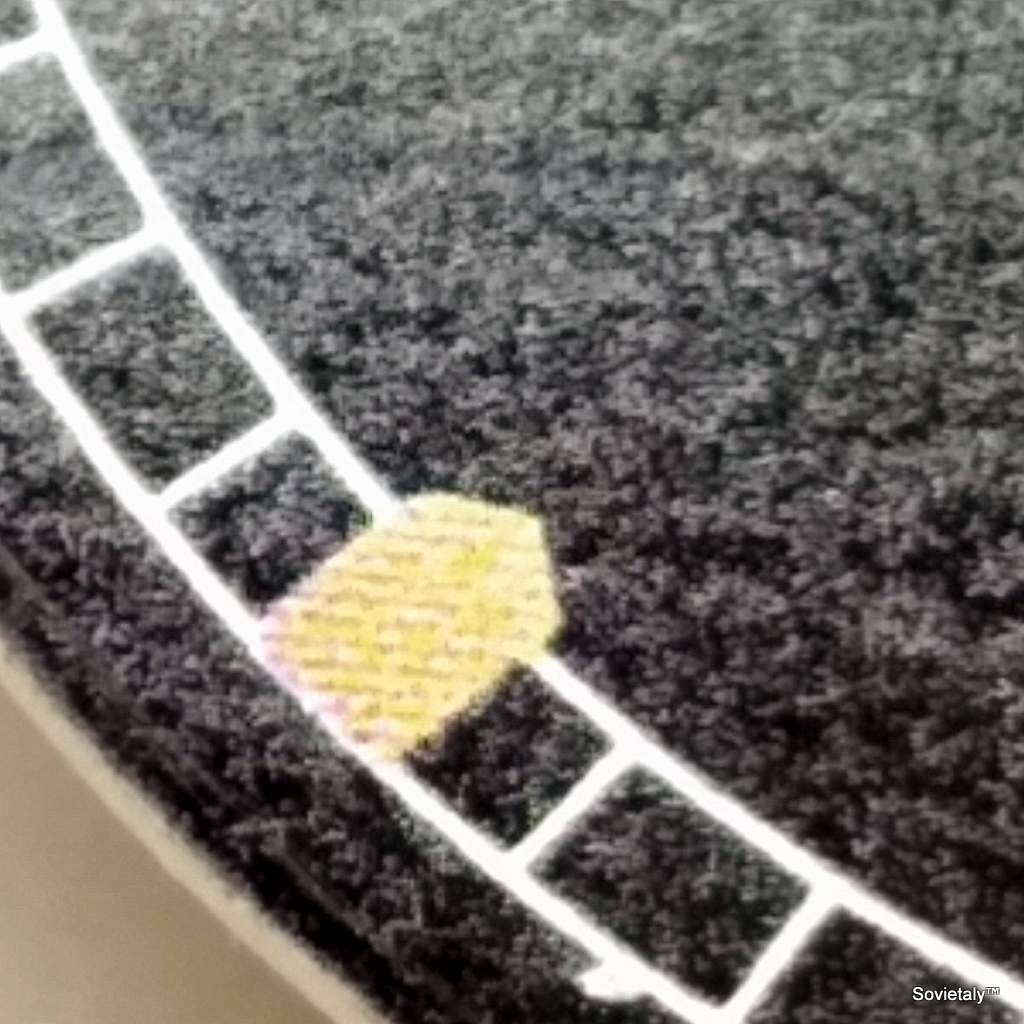
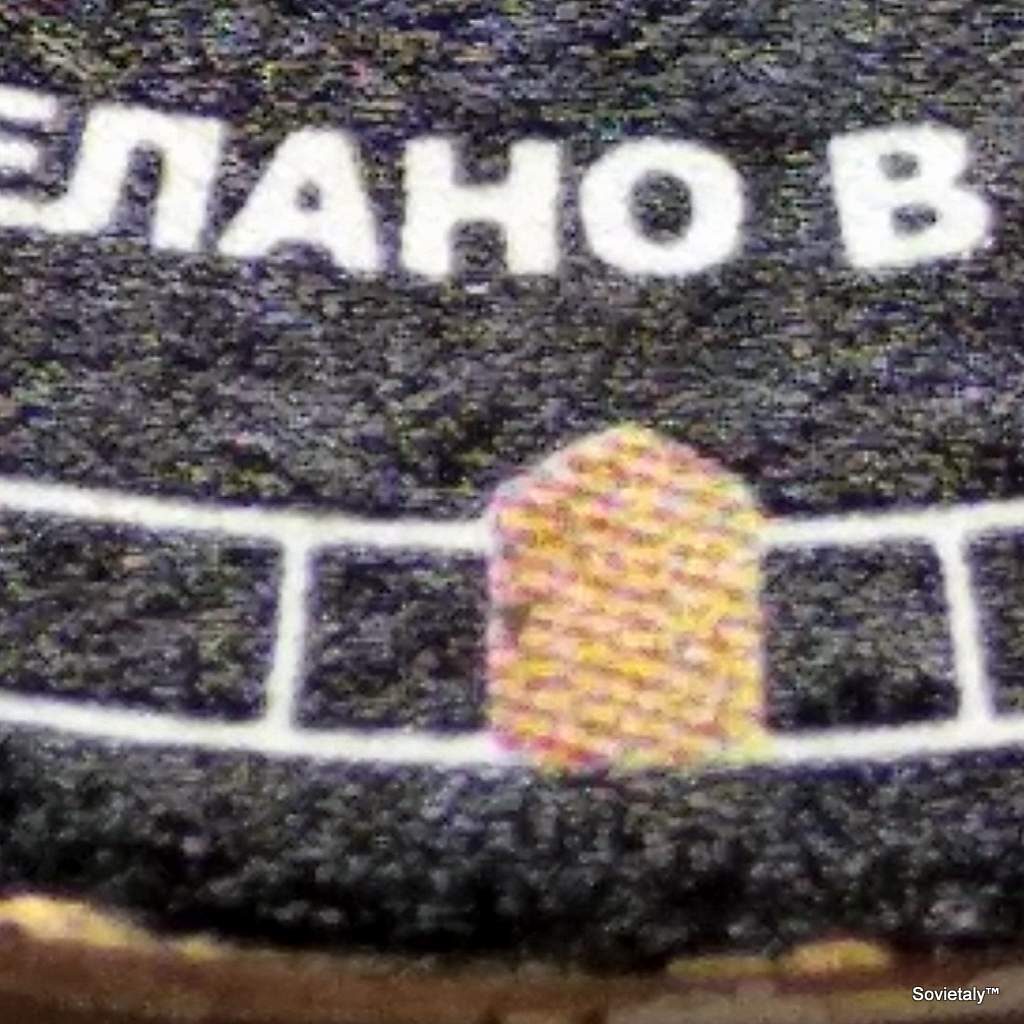
Lunochod Commemorative Watches: A Rarity
To date, there are no known authentic wristwatches commemorating the Lunochod rovers. Some Soviet pocket watches seem to take this name, but there is no concrete evidence linking these models to the Lunochod space missions.
Conclusions
After careful analysis, it is clear that the commemorative dial of the Pobeda Lunochod 1 is a fake. This conclusion is based on microscopic analysis of the print, lack of official documentation, and other suspicious characteristics. Collectors are advised to be cautious and always thoroughly verify authenticity before making a purchase.
A Space Odyssey: The Lunochod Missions
Lunochod 1
Lunochod 1 was the first automated lunar rover, launched by the Soviet Union in 1970. This historic mission explored the lunar soil, sending crucial data on the composition of the ground and the lunar environment back to Earth. Powered by solar panels and equipped with eight independently driven wheels, the rover traveled a distance of 10.5 km on the lunar surface, significantly contributing to our understanding of lunar geology.

Lunochod 2
Lunochod 2, launched on January 8, 1973, was the successor to Lunochod 1. This rover featured an advanced telecontrol system and a series of improved scientific instruments, including an X-ray analyzer, a magnetometer, and an alpha particle detector. During its nearly five-month mission, Lunochod 2 traveled a distance of 37 km on the lunar surface, providing valuable data on the composition of the lunar soil and the resistance of materials to extreme lunar temperatures.
Discoveries and Contributions of Lunochod 2
One of Lunochod 2’s most significant discoveries was a small crater, which was subsequently named in its honor. The information collected by the rover contributed to a deeper understanding of lunar geology, influencing the planning of future space missions.
Lunochod 3 and Beyond: Unfulfilled Plans
Lunochod 3 was planned for a lunar mission but was never launched. The rover is currently displayed in a museum in Moscow. This rover would have benefited from the lessons learned from previous missions, but its mission was canceled due to budget cuts and changes in Soviet space policy priorities.
The Fourth Rover: An Early Failure
The first attempt to launch a Lunochod rover failed in 1969 when the carrier rocket was destroyed shortly after launch. This incident highlighted the technical difficulties and risks associated with space exploration, but it did not stop the successes of subsequent missions.
Resources for Further Reading
For those who wish to deepen their knowledge of Soviet and Russian watches, here are some pertinent and specific links:
- Orologiko: Discussion on the authenticity of commemorative dials
- WatchUSeek: Guide to identifying fake Pobeda dials
- Reddit – r/Watches: Discussion on fake Soviet commemorative watches
- Foro de Relojes: Detailed analysis of Soviet commemorative watches
- Watch.ru: Topic dedicated to Lunochod commemorative dials
- Forumamontres: Discussion on Lunochod commemorative watches
- Montres Mécaniques: Article on fake Soviet commemorative watches
- UhrForum: Thread on fake Pobeda commemorative dials

